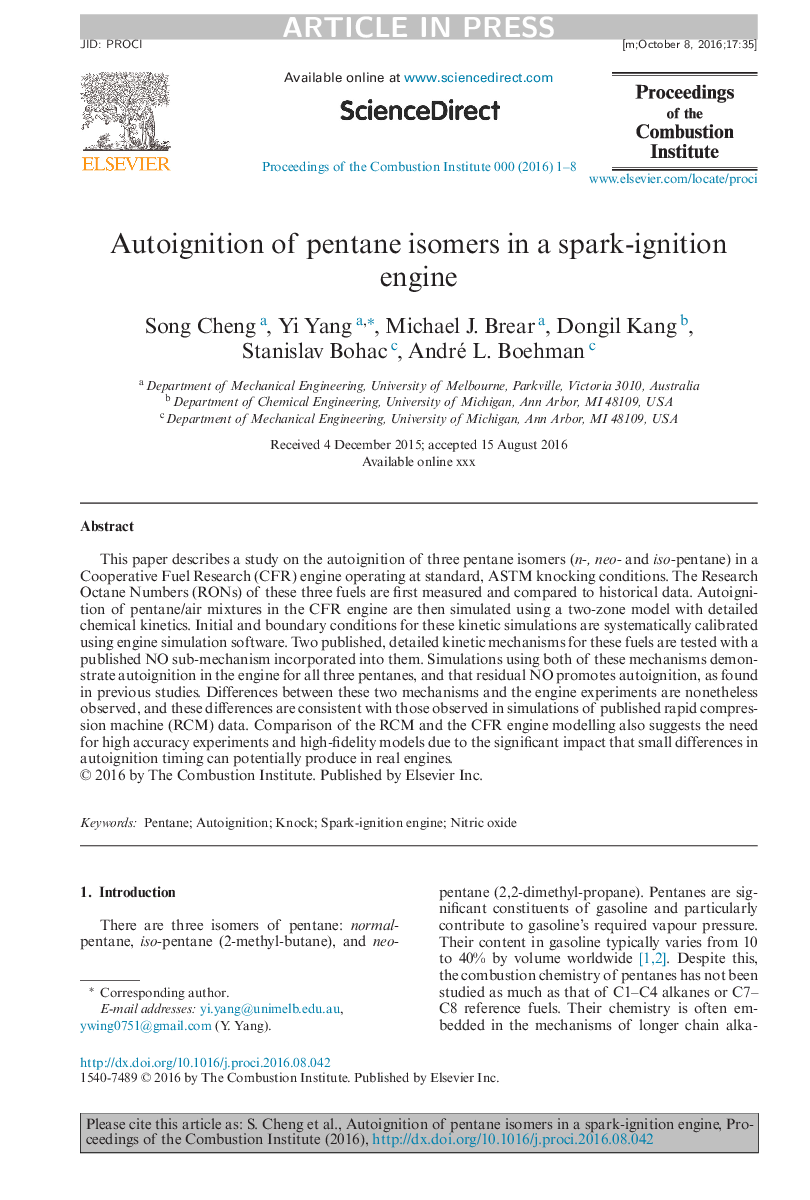| Article ID | Journal | Published Year | Pages | File Type |
|---|---|---|---|---|
| 4915403 | Proceedings of the Combustion Institute | 2017 | 8 Pages |
Abstract
This paper describes a study on the autoignition of three pentane isomers (n-, neo- and iso-pentane) in a Cooperative Fuel Research (CFR) engine operating at standard, ASTM knocking conditions. The Research Octane Numbers (RONs) of these three fuels are first measured and compared to historical data. Autoignition of pentane/air mixtures in the CFR engine are then simulated using a two-zone model with detailed chemical kinetics. Initial and boundary conditions for these kinetic simulations are systematically calibrated using engine simulation software. Two published, detailed kinetic mechanisms for these fuels are tested with a published NO sub-mechanism incorporated into them. Simulations using both of these mechanisms demonstrate autoignition in the engine for all three pentanes, and that residual NO promotes autoignition, as found in previous studies. Differences between these two mechanisms and the engine experiments are nonetheless observed, and these differences are consistent with those observed in simulations of published rapid compression machine (RCM) data. Comparison of the RCM and the CFR engine modelling also suggests the need for high accuracy experiments and high-fidelity models due to the significant impact that small differences in autoignition timing can potentially produce in real engines.
Related Topics
Physical Sciences and Engineering
Chemical Engineering
Chemical Engineering (General)
Authors
Cheng Song, Yang Yi, Michael J. Brear, Kang Dongil, Stanislav Bohac, André L. Boehman,
